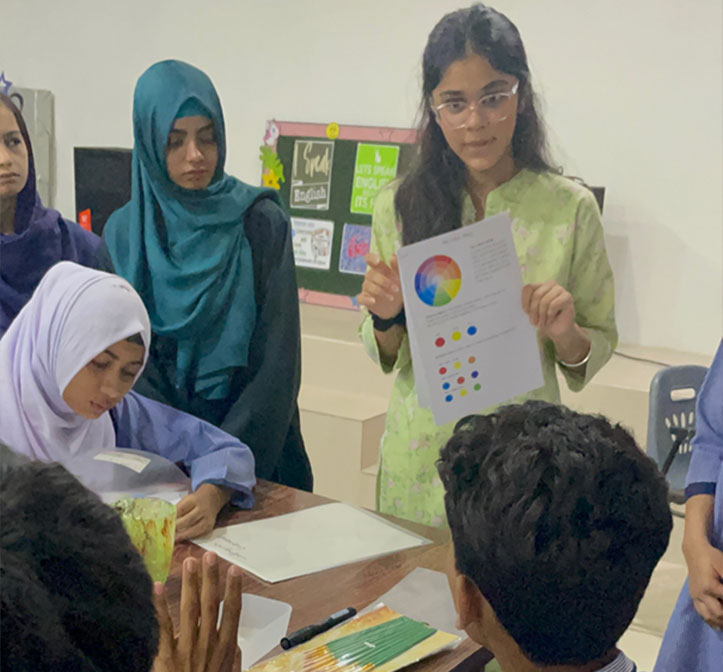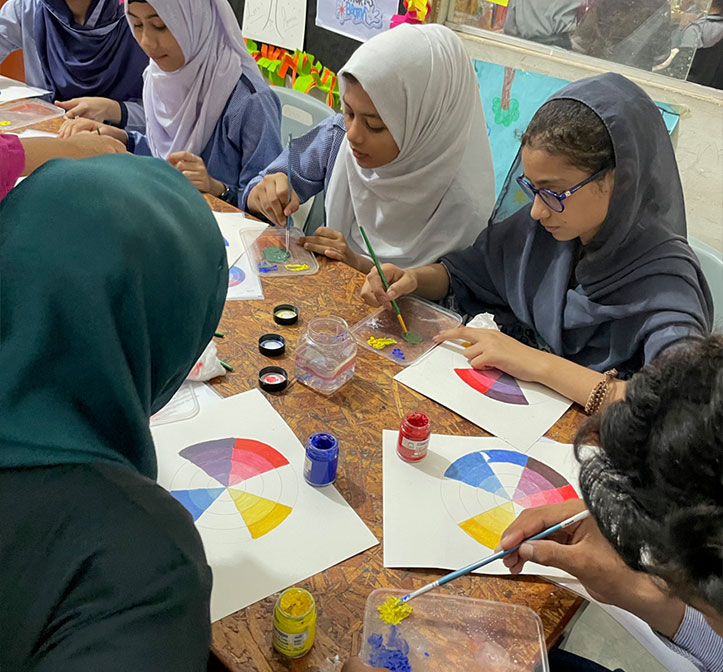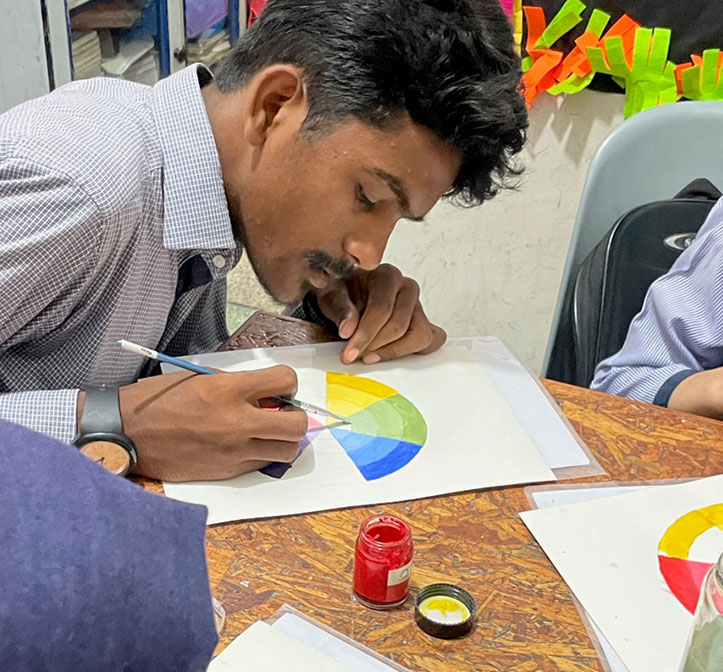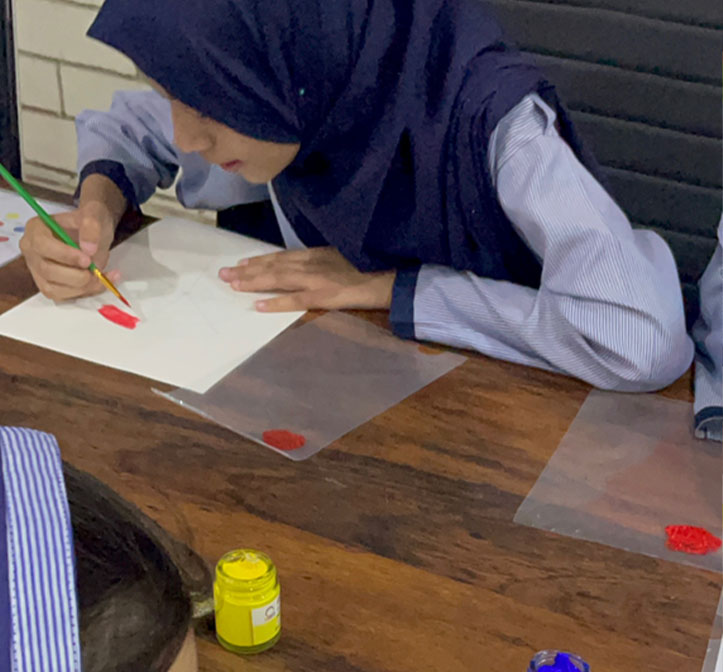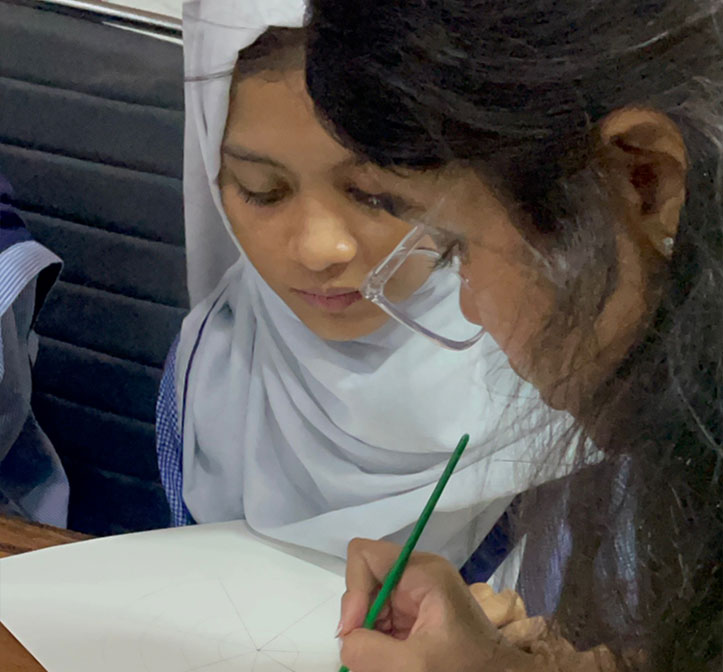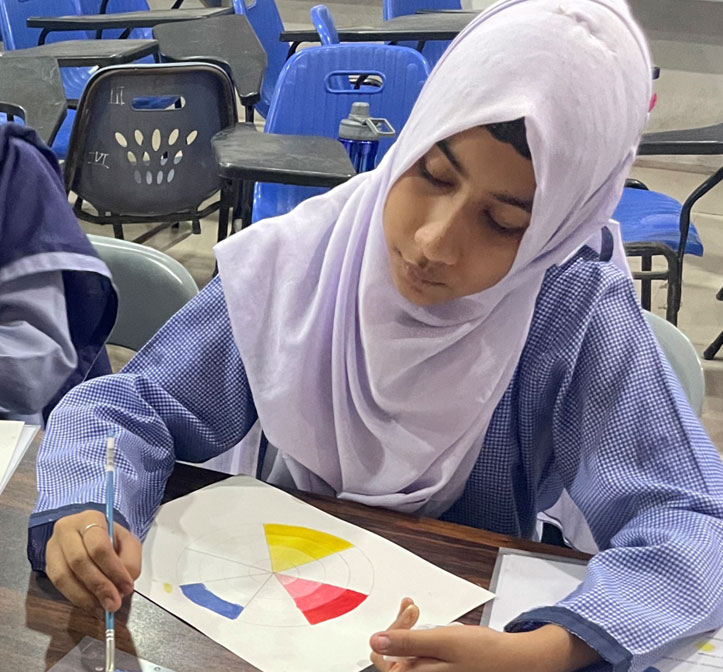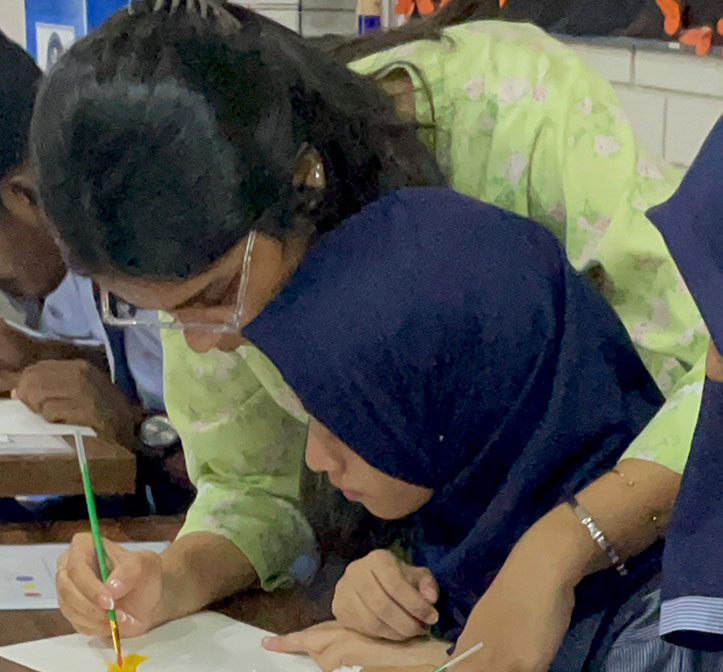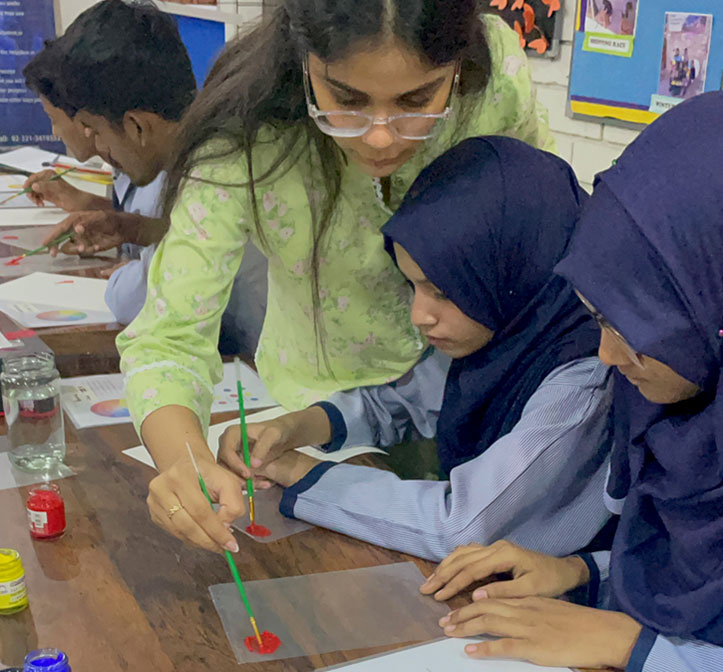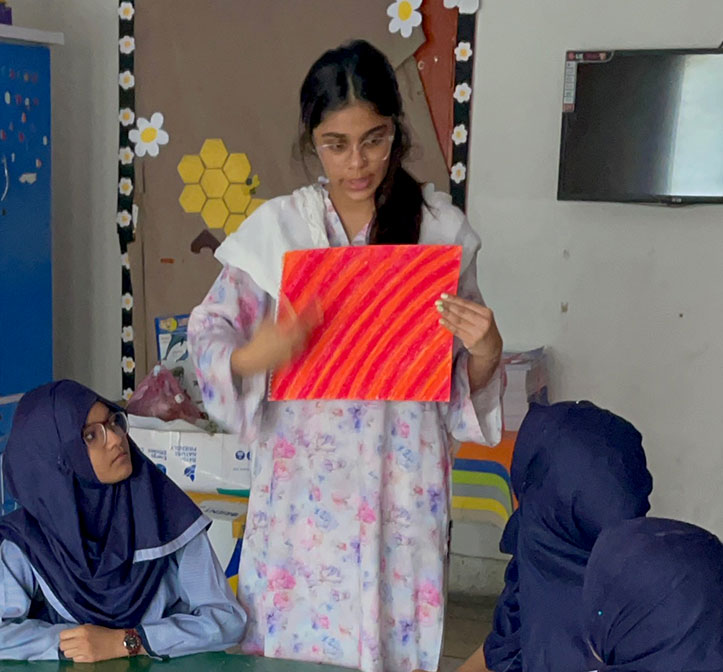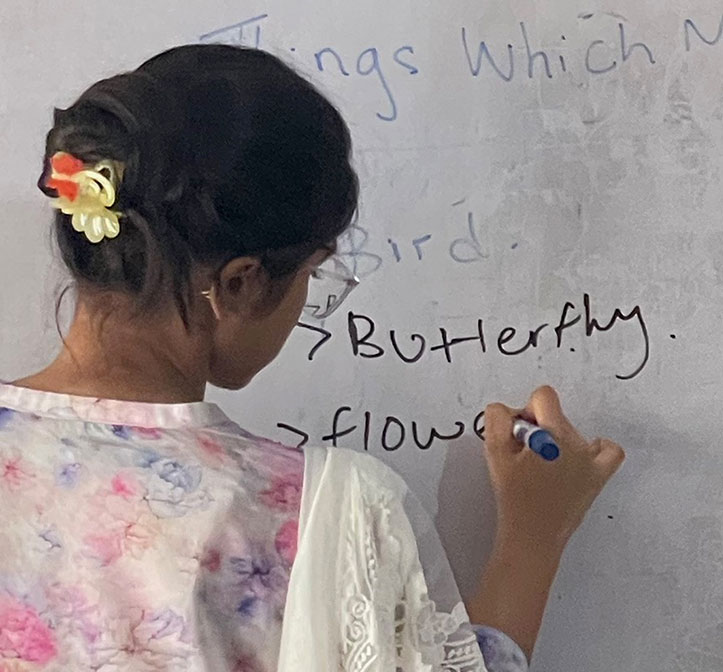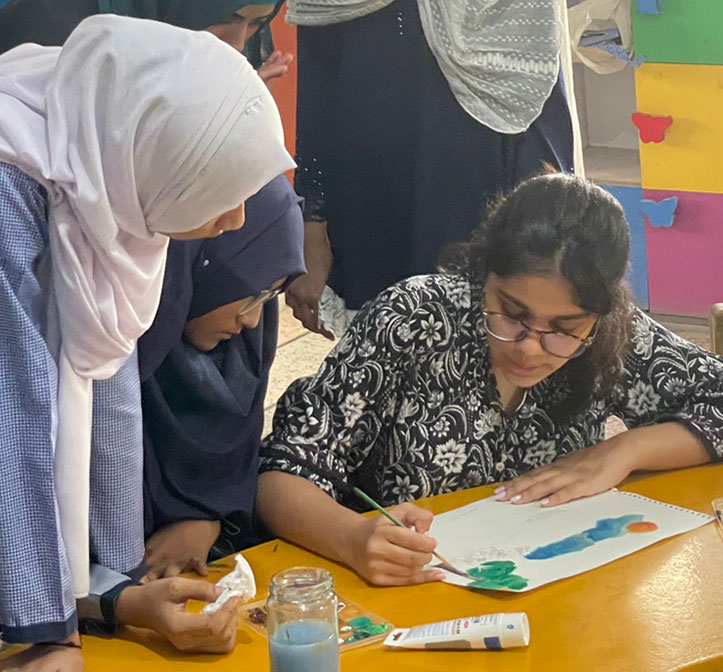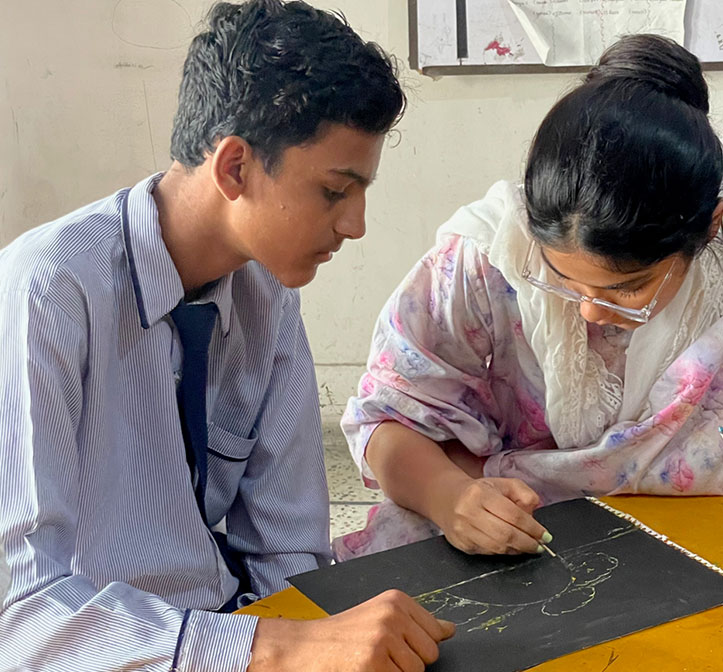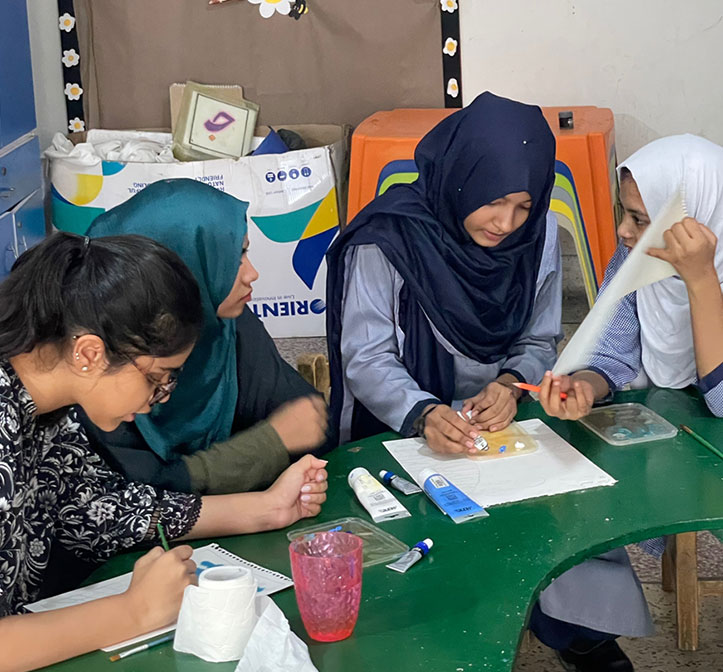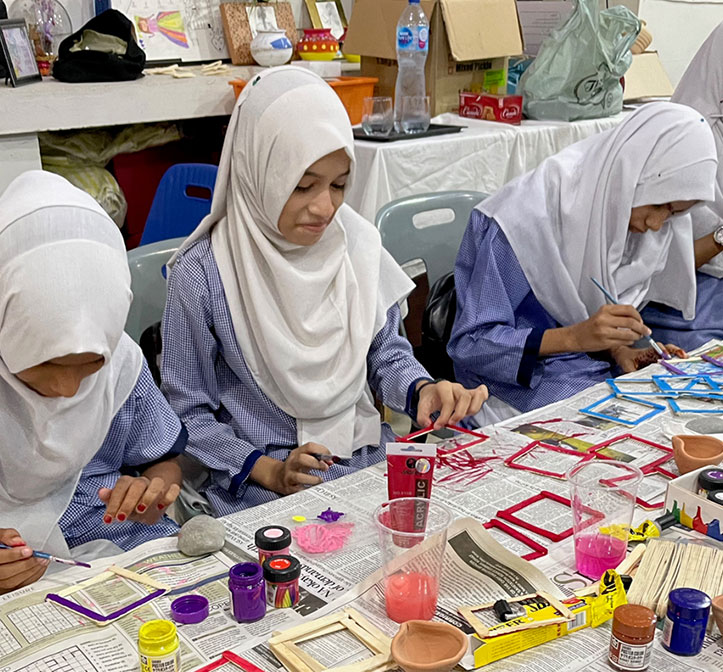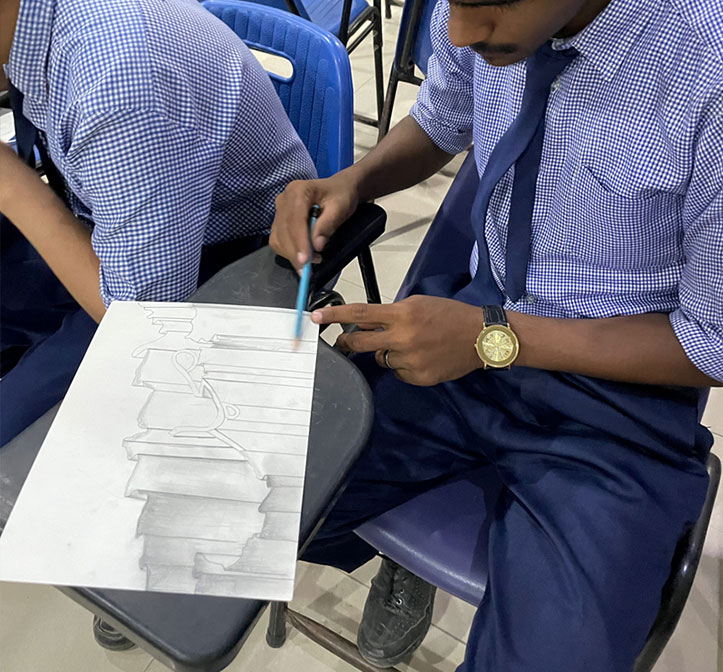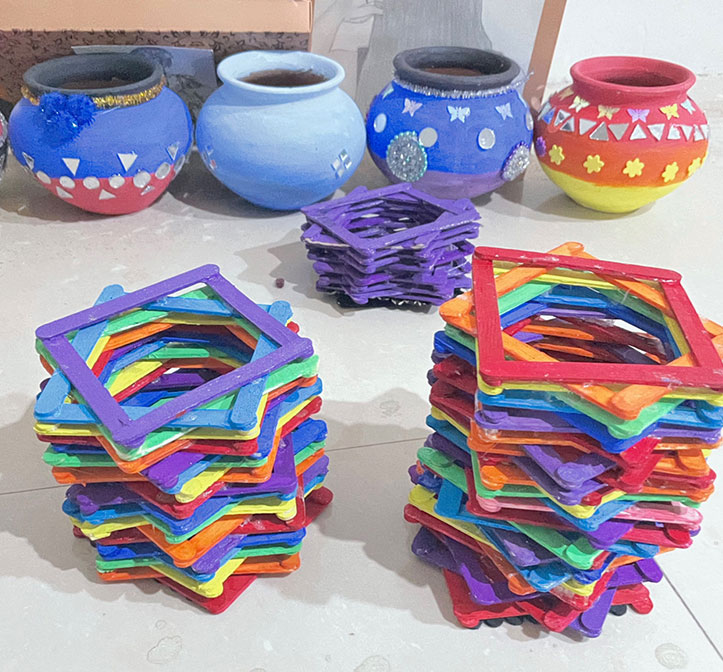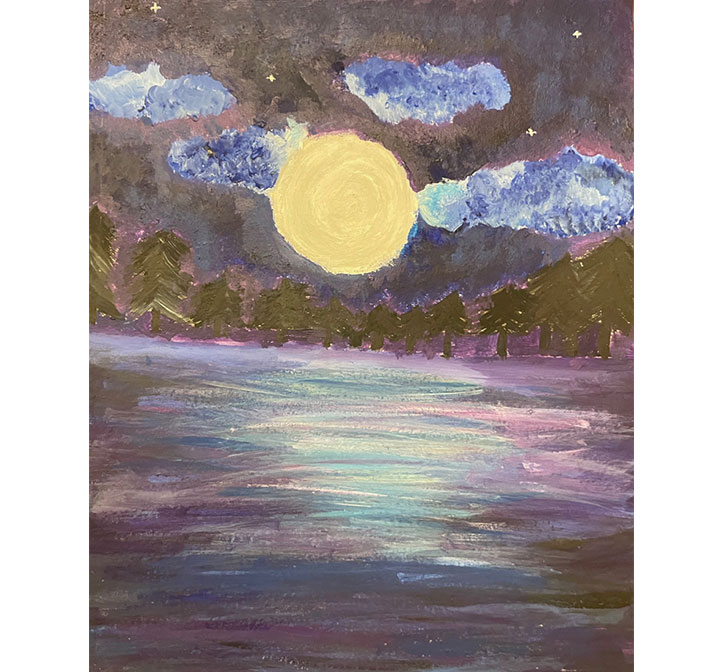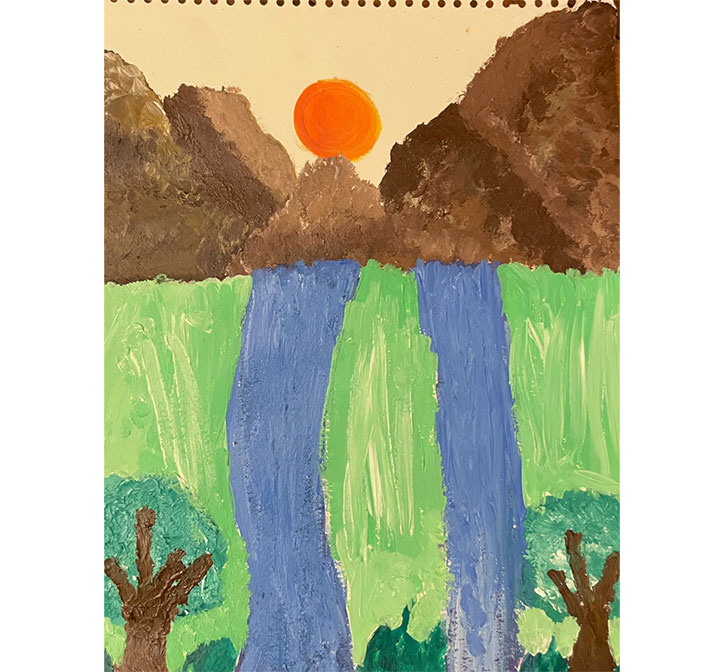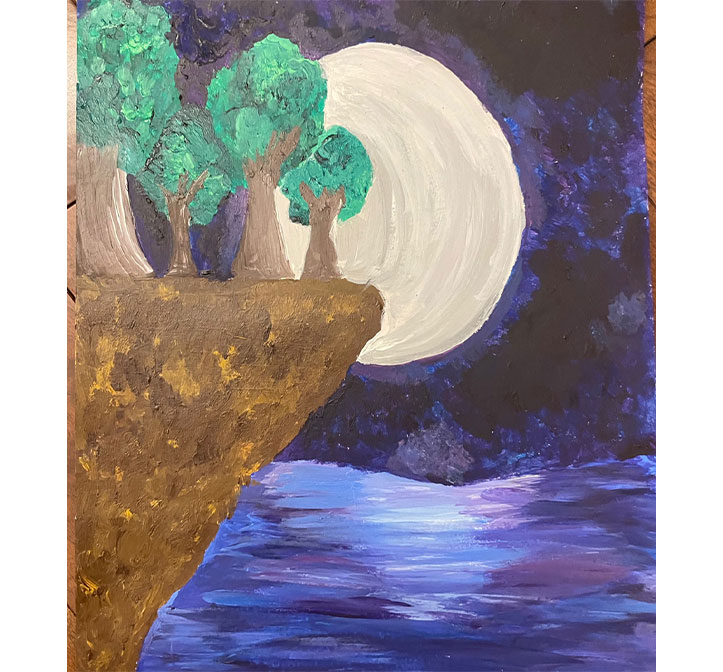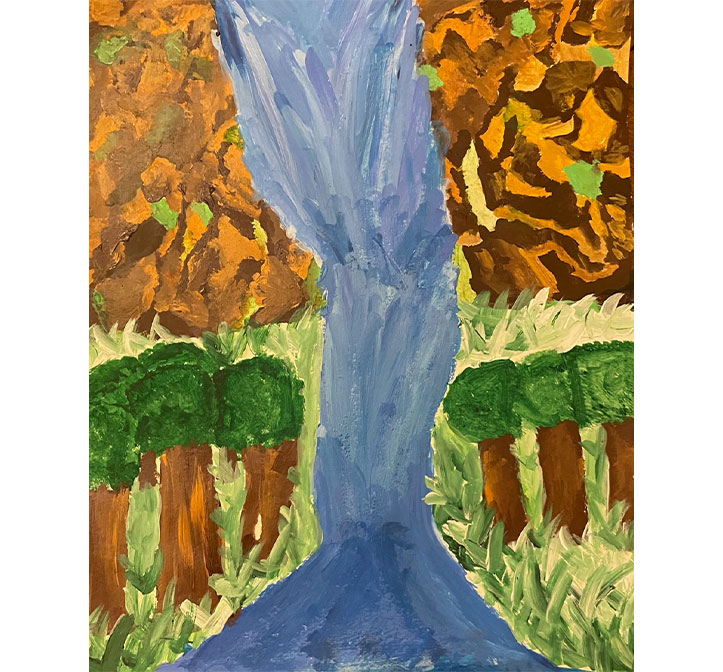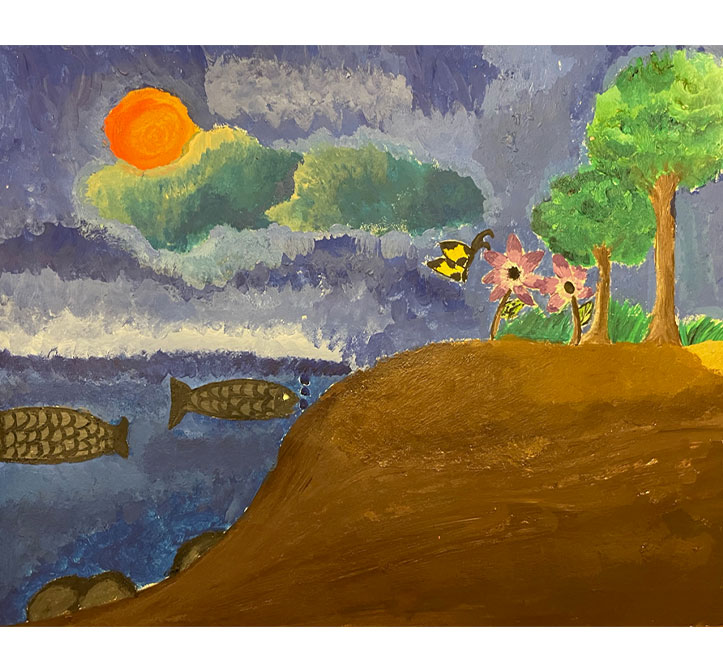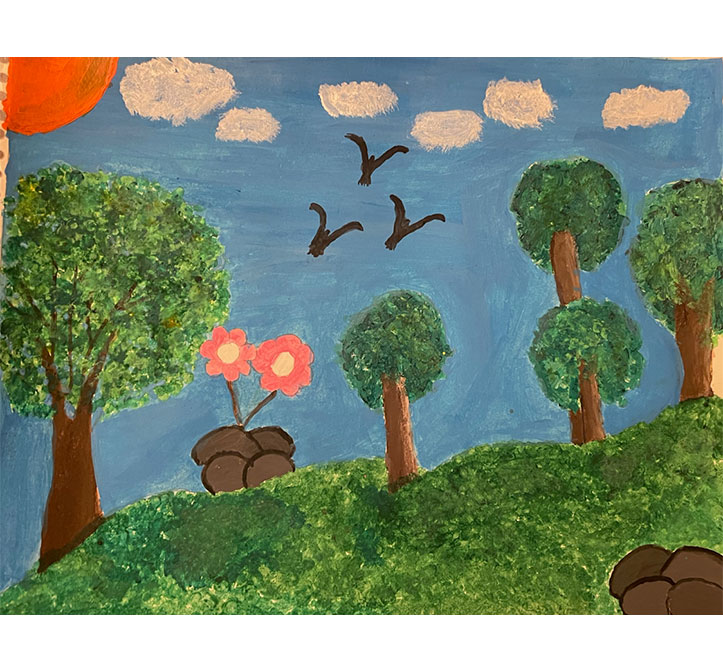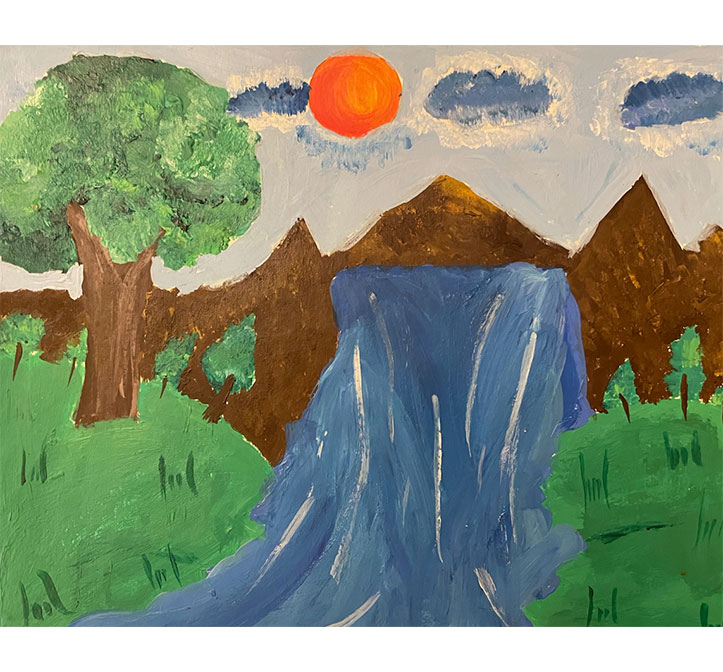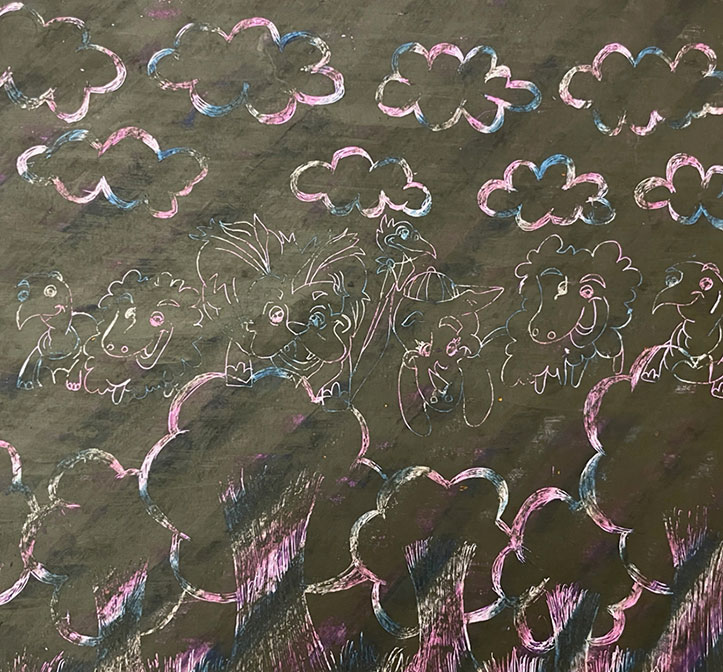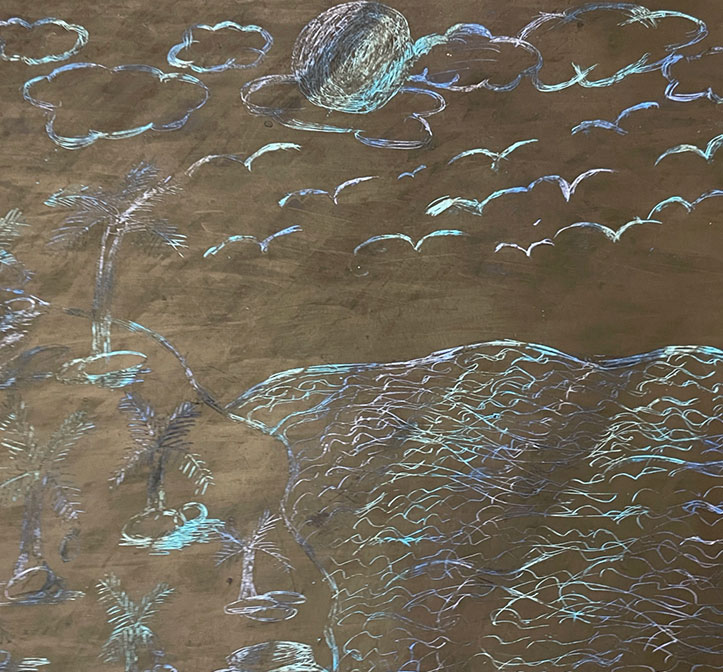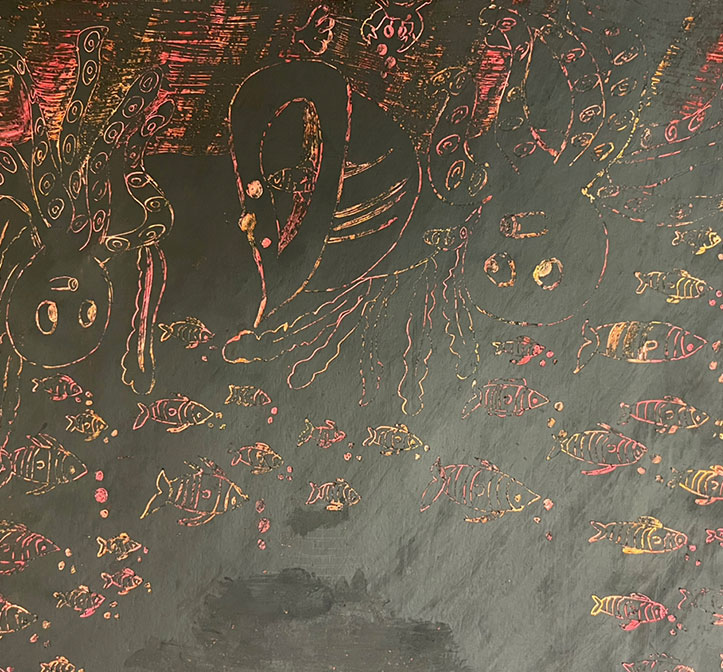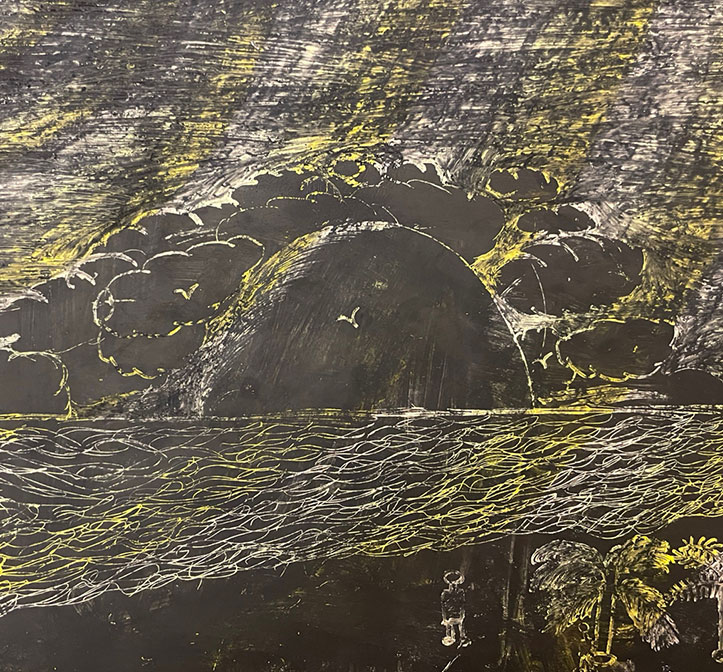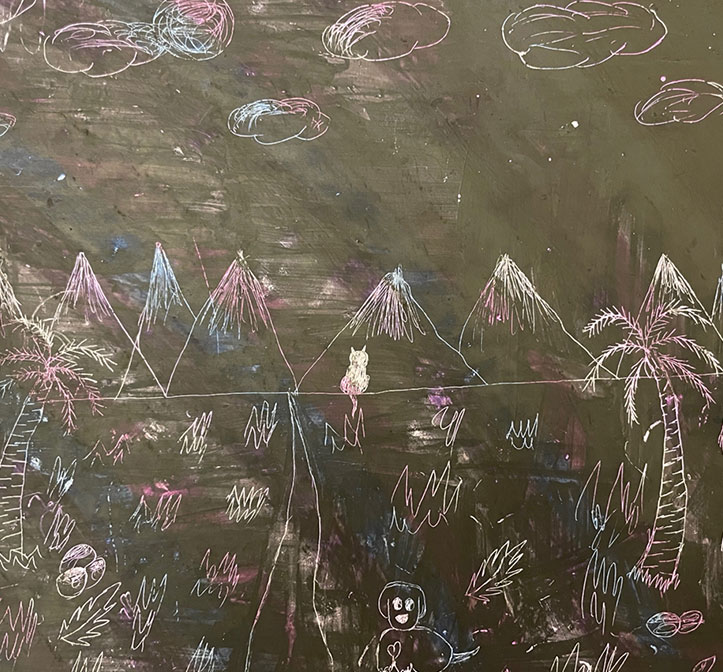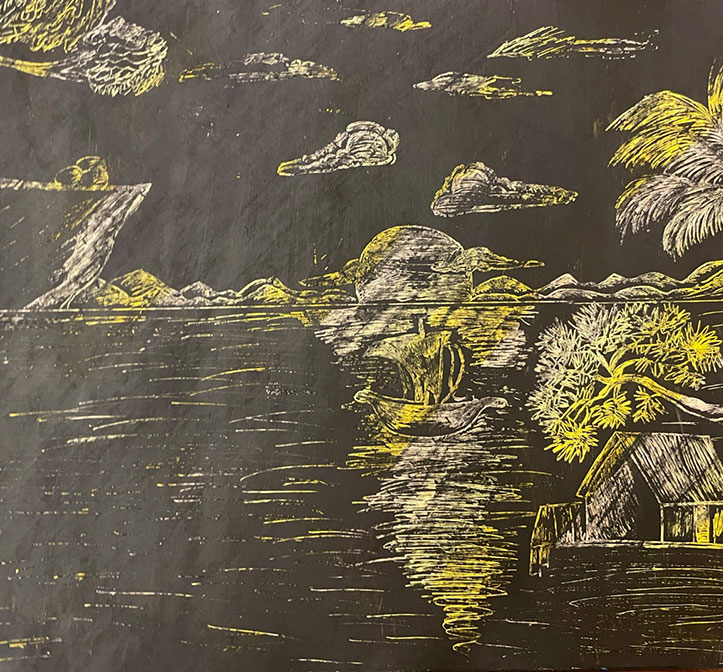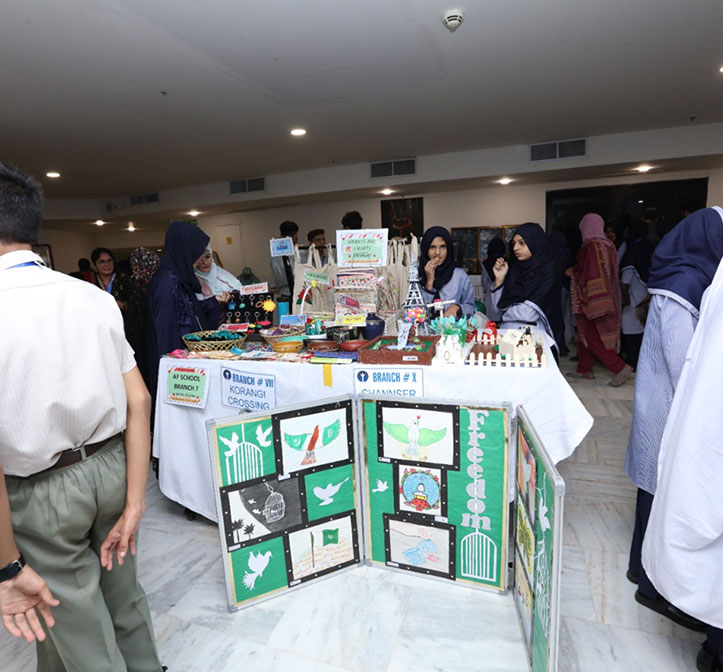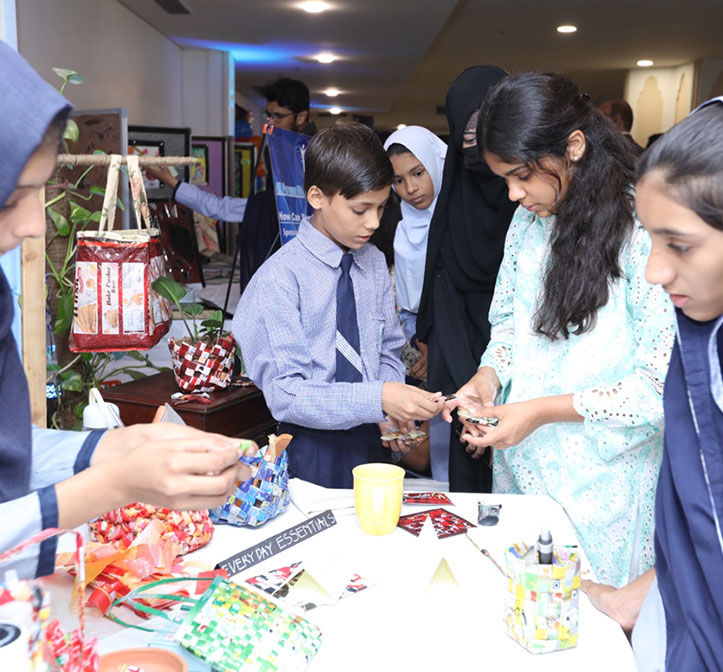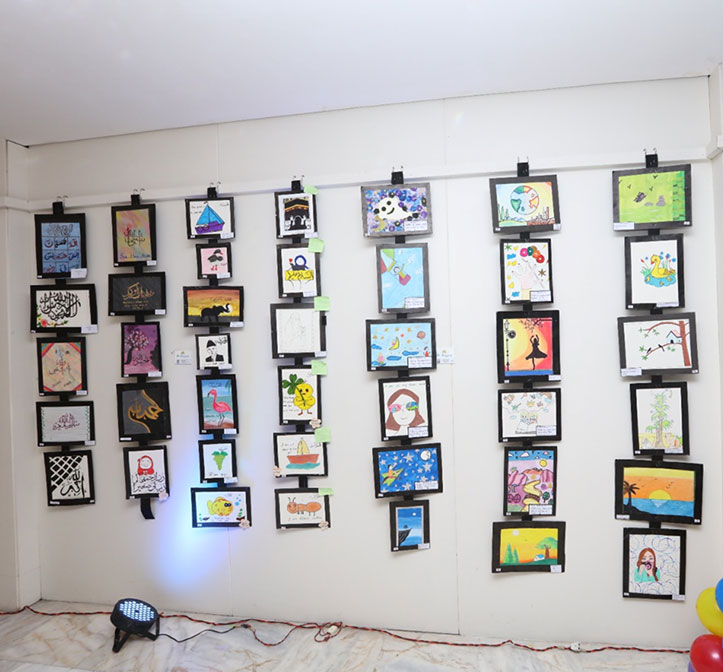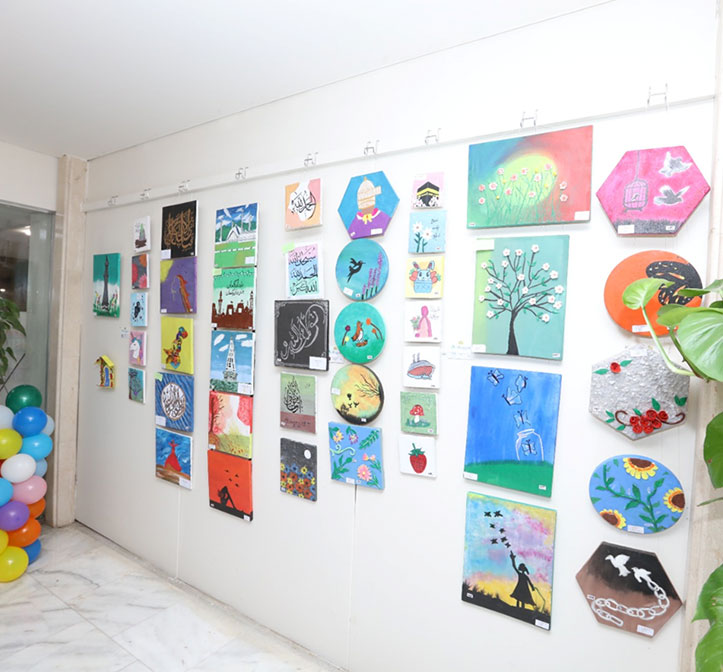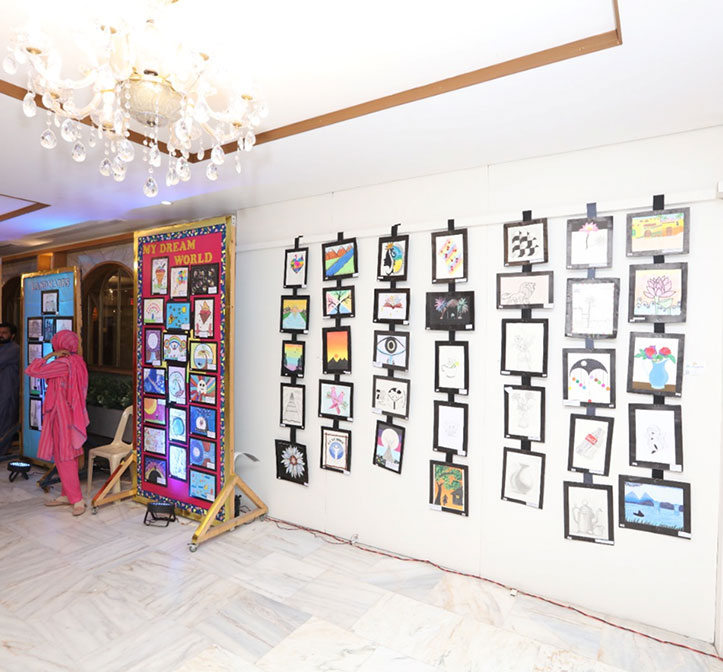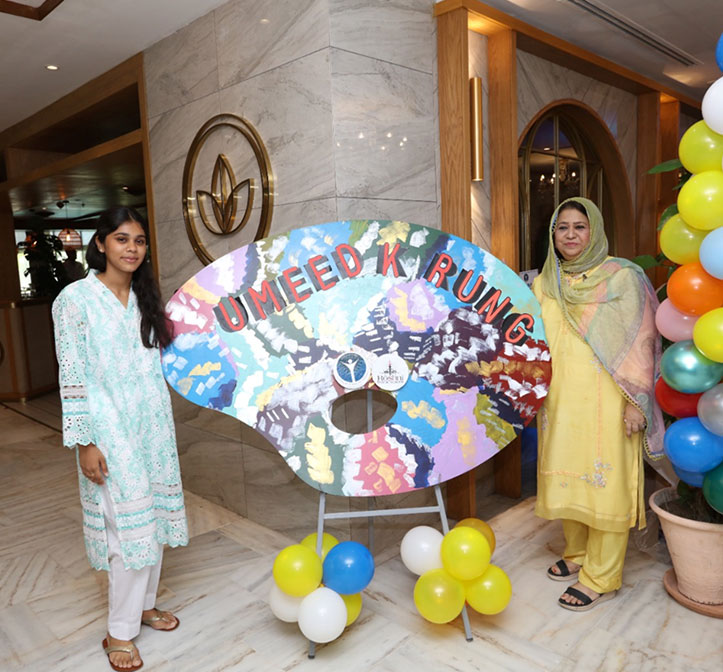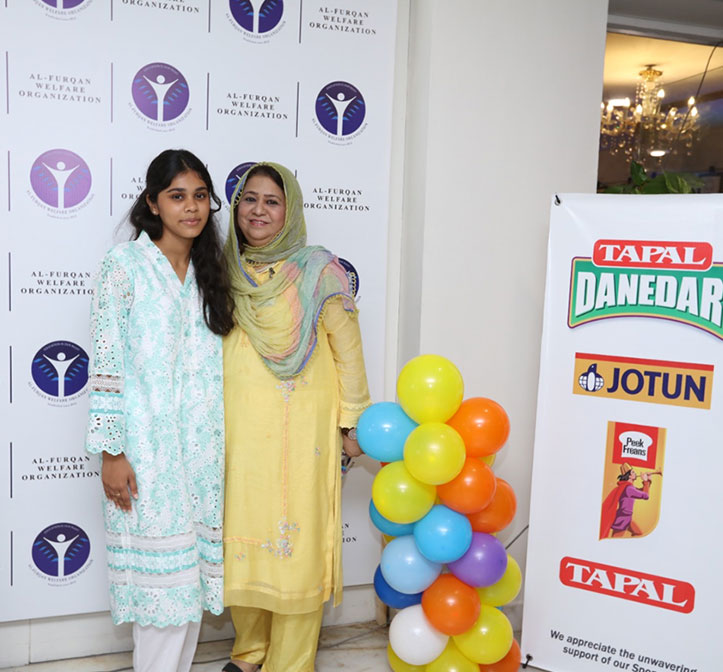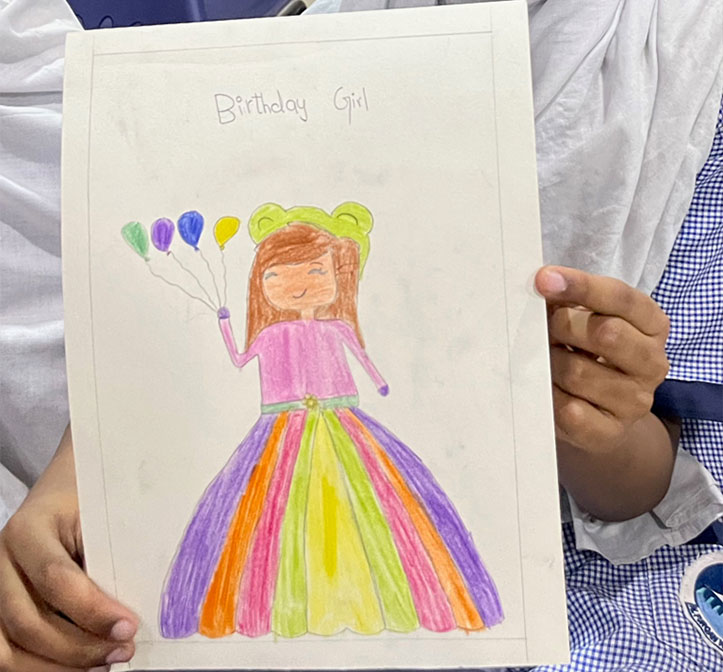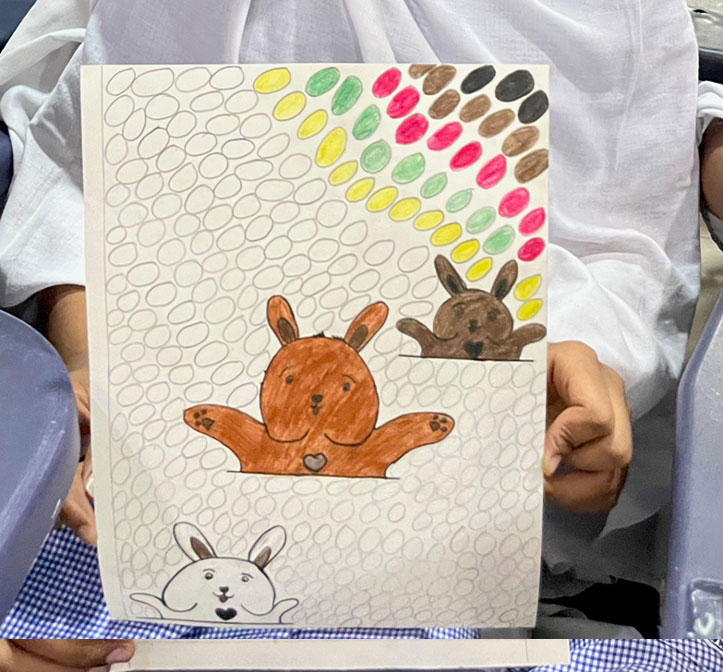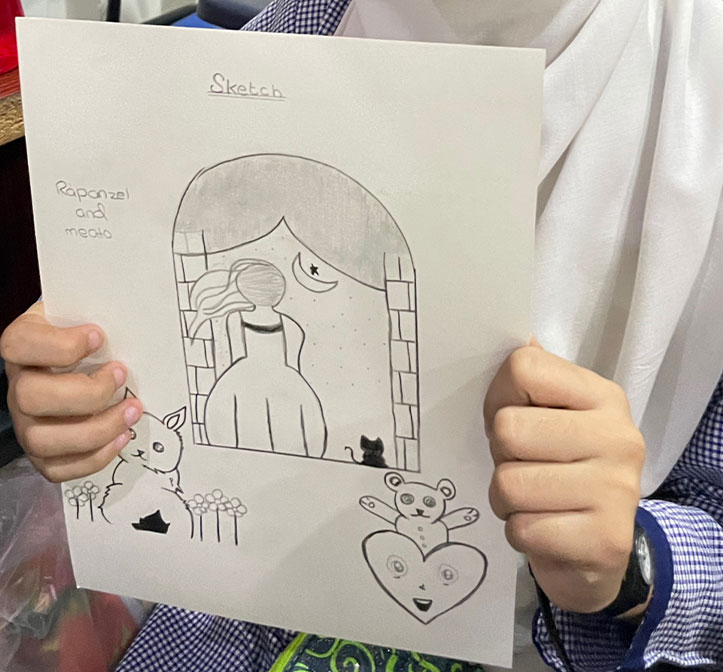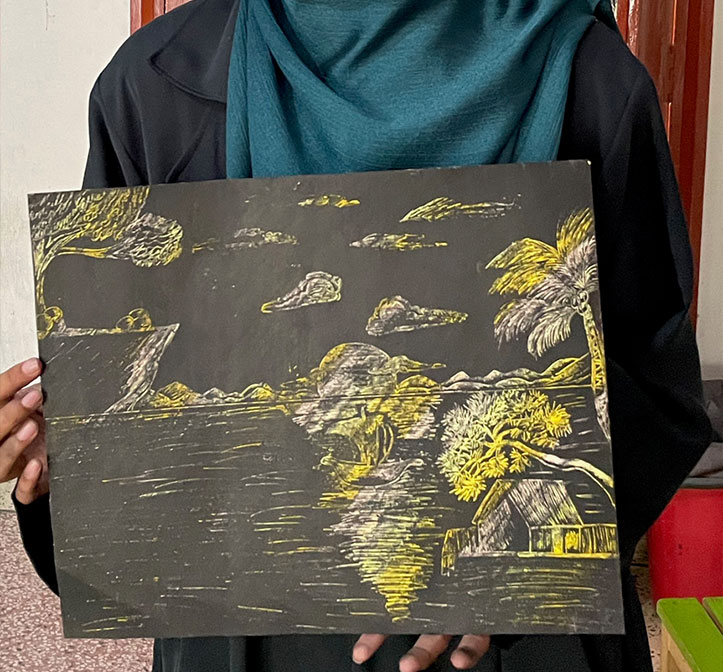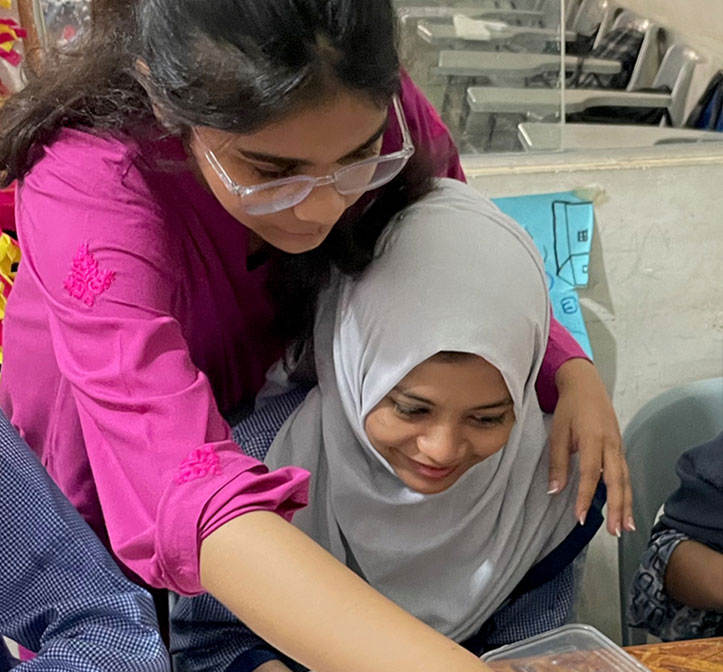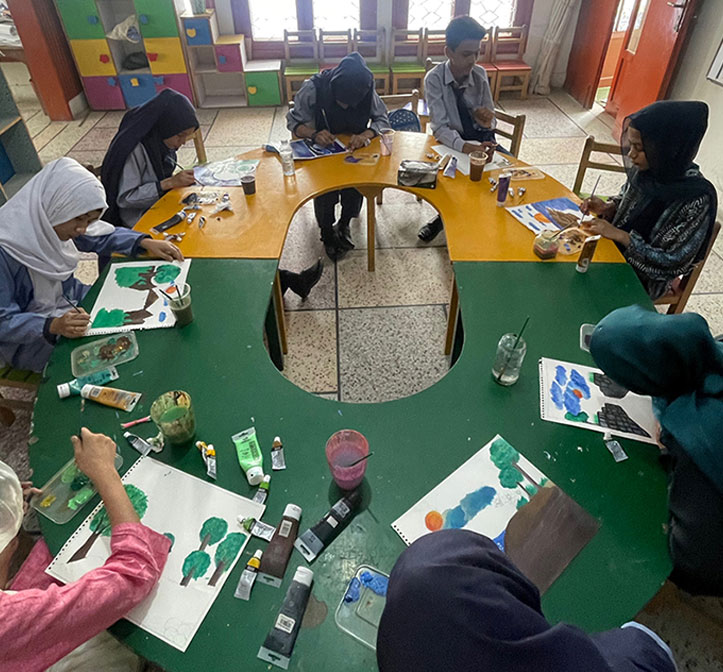When I heard the students request us to continue these art education initiatives, I realized the significant impact.
I had the privilege of conducting Summer Art Classes at Al-Furqan School, a non-profit welfare
organization for the socioeconomic and moral uplift of underprivileged children through education
and health care. Building upon my teaching experience from the previous summers, I conducted art
classes where I taught them how to use different mediums, enabling them to process their thoughts
and emotions and visually present them. Intrigued by the ability of each child to express themselves
through their work, I explored the role artistic expression plays in the development of these
children.
I had a class of ten students. The majority were girls, with a few boys as well. Their ages ranged
from 12 to 16. Initially, the children were reserved and quiet, and I saw them observing me with
uncertainity reflected in their eyes. I asked them to leave their desks and gather around me in a
huddle; I introduced myself, and asked each student to tell me a little about themselves. Slowly, I
felt them relax and become comfortable.
I asked the students whether they would prefer I speak in Urdu or English. Even though I sensed that
they were more comfortable with Urdu, they insisted that I speak with them in English. They had a
burning desire to improve their spoken English, and since they had limited opportunity in their
homes to speak in English, they were excitied about interacting and speaking with me. I was
encouraged to see the same kind of enthusiasm and excitement in these students about learning art.



After the ice-breaker, I spoke with the students about Colour Theory. We created folders for each
child with an introduction to the basics of the colour wheel; showing how every colour has shades,
which are used to give a painting depth. One student eagarly volunteered to read out loud the
written text. I explained to them what primary, secondary and tertiary colours were and then I asked
the children to paint their own colour wheel.
Beyond the art topics which I discussed with the students throughout the classes, it was their side
chats, questions, comments which were the most meaningful and insightful. One student commented
“Ghar ka kaam hi toh karna ho ga, is ka kya faidia.” (I will have to do
housework in the end, what
the point of this). I noticed a preconceived notion existed
among the girls, that they would end up
just bound to the four walls of their home, and dreams of becoming a fashion designer, doctor,
teacher were unattainable. Building upon Al-Furqan’s efforts to reassure them that we are standing
behind them, helping them fight to attain their dreams; I strived towards changing their mindsets.
In my own way, I tried to make them realise that the power of education is not only materialized
through practicing a profession, but is seen through the human development along the journey; that
art will aid them in being able to express themselves visually if not verbally.

Eager to see the children apply their learning from the class on colour theory, and enhance their
painting skills, I tasked the children to create a painting depicting “nature” using acrylic
paints.
They were provided with paper to brainstorm their ideas and then plan out their paintings in terms
of placement of elements.
The children first drew and then painted their paintings. I aided them, holding their paint brushes
and teaching them how to paint clouds, water ect. I kept reinforcing that they needed to use a
variation of shades for each colour to create depth to further enhance their work.
As I improved a student’s stroke, I noticed that she had complete stationery, except for paint
brushes. I wondered was art not as important for her as other subjects? Do her parents not realize
that by not prioritizing artistic exposure, they are unconsciously curtailing her development? Yet I
can’t help but smile when she told me “At home I paint using
make-up brushes; I will collect my Eidi
to buy paint brushes.” Her eagerness to express her
creativity was palpable to me.
This class on acrylic paints not only boosted the children's painting skills but enhanced their
confidence in their ability to paint. By the end of the class, the children were so proud of their
work, asking to take pictures for them so they could go home and show their parents.
Another one of the classes was on etching technique. The children were instructed to select a colour
which made them happy and were then encouraged to list what all made them happy. They then selected
shades of the colour and paint the base of their page; then paint black on top of the page and wait
for it to dry. They then etched out their drawings using a pointed tool. This medium was unfamiliar
to the children, but their excitement and joy was palpable, as they saw the colours reveal
themselves as they etched away the black paint.
When I encouraged a student to take home the the waterfall he had painted and show to it to his
mother, he replied “Yeh maths ka result nahi haye keh woh
khush hoon” (this is
not a math result
that she would be happy).
I also organized a “Crafting Dreams” Art Exhibition at Regent Plaza Hotel, to showcase artwork of students from 14 Al-Furqan School branches, along with Roshni Public School; fostering a sense of achievement among students. We conducted an inter-branch artwork competition and subsequently awarded prizes to students for their exceptional pieces.
I was able to connect and engage with children from different socioeconomic backgrounds and help
unite them through their creative ideas and desire to learn. Intrigued by each child’s unique
ability to express themselves through their artwork, I was able delve deeper into exploring the role
of artistic expression plays in the development of these children as they processed their thoughts,
explored emotions and presented them visually.
Interacting and engaging with these students allowed me to appreciate how universal human emotions
such as sorrow, joy, and anxiety are felt and expressed differently between adults and children. I
also saw the nuances of expression between the works of different children. This experience has
inspired me to continue imparting my learning to these students in hope that I can help create a
positive impact in their lives.


